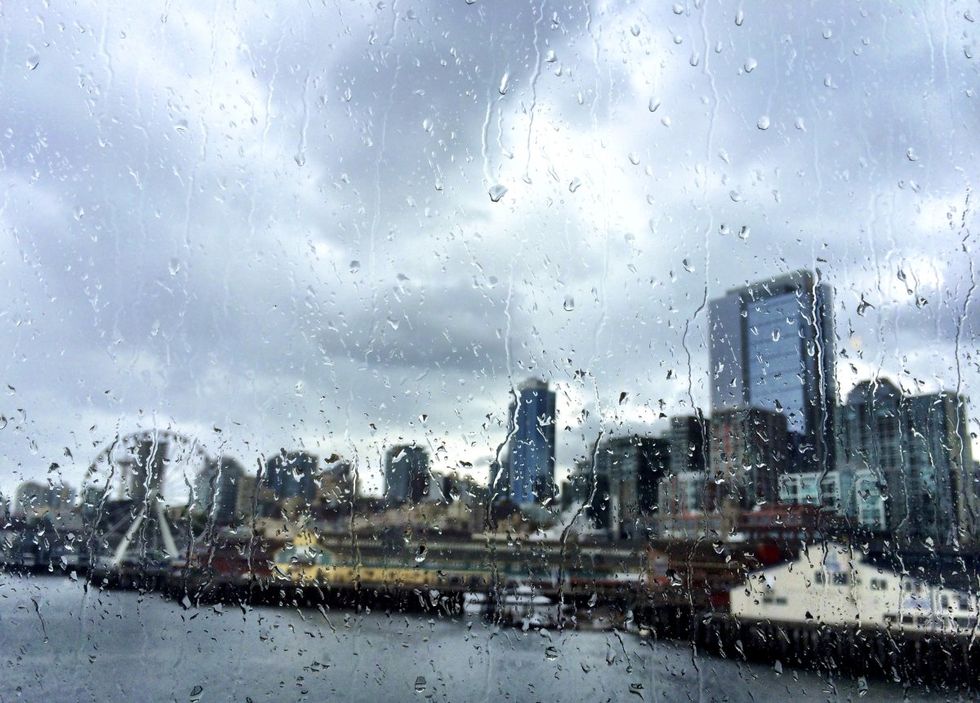Seattle is known for many things like fresh seafood, evergreen trees, and clean air. But of the many things this wonderful state is known for, there are two specific areas that have been most popularly discussed—the rain.
From almost every source I found, the report stated that Seattle closes up to 152 days of precipitation, but only 37 inches of rainfall annually which is actually lower than the national average. Statistically speaking, that is just above 40% of the entire year where sun doesn't shine above your head. Last month, Seattle Pi reported that Seattle has had only about 5 days of sunshine since the beginning of last October. That averages less than 1 day of sun every month.
Sunlight is vital to human health. It is one of the biggest providers for vitamin D, which helps you absorb calcium for stronger bones, healthy immune system, and also the influence of expression in cancer development. Also there is a psychological affect on the mental health of humans. Not getting enough sun could aggravate your anxiety and deteriorate your mind. There are other complicated algorithms involving this issue, but there is a correlation between the weather and the rate of depression in each respective area. There was a study done by Jaap Denissen that contradicted this idea, but later have concluded that weather does in fact have an affect on Seasonal Affective Disorder (SAD) otherwise known as the “winter blues.”
With such lack of sun in the area, Seattle has been ranked 2nd out of 33 states for suicide rates along with Salt Lake City, Utah and Dallas, Texas. Besides rain, one other cause of depression may well be related to usage of marijuana. Weed is a known depressant and reported adult-usage of marijuana has increased drastically with the new changes in state legislature regarding the recreational use of the substance. But contrary to this belief, there have been studies that showed the positive affect of weed on mental illness patients. It actually helps stabilize moods, fight off anxiety, and alleviate insomnia and other symptoms that may be related to depression.
While there are lots of correlation between the two ideas, there have been lots of mixed arguments. There isn't enough information to land on a exact verdict on the controversy. All we have found is that marijuana can be used as a reliever or catalyst in worsening the illness, depending on the dosage and the physical temperament of the user.
Aside from the “cloudy” days, the Seattlites here always have high hopes for summer. This year in particular, you can surely be excited for what is coming. The long-ranged predictions shows that the weather should be warming up in mid-May and then on.
For those of you who struggle during the rainy season of Seattle, here are few methods that you can use to overcome the sun deprivation.
- Therapy Energy Lamps
- Vitamin D Supplements
- Go on a Vacation
This is a actually a popular method used by a lot more people than I had expected. This is essentially a lamp that mimics sunlight. People with SAD or depression use this as well to bring a little more sunshine in their life.
Like I’ve mentioned above, Vitamin D is very important in calcium absorption and other health benefits. Just exposing yourself to sunlight for 15-20 minutes a day can greatly lower the risk of SAD by increasing your serotonin levels, but if sun isn't an option, there are other natural supplements that are available. These following foods are Vitamin D rich: fatty fish (tuna, mackerel, and salmon), milk, cheese, egg yolks, and mushrooms.
This is the last one on my list because I know not everyone can afford this option. Due to time or economical restraints, people often find a different solution. But if it is allowed, this is the most effective and desirable choice.


















